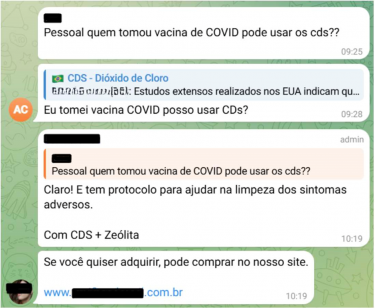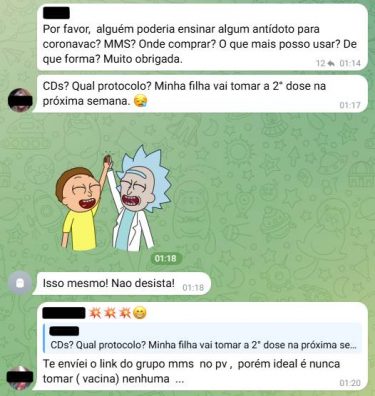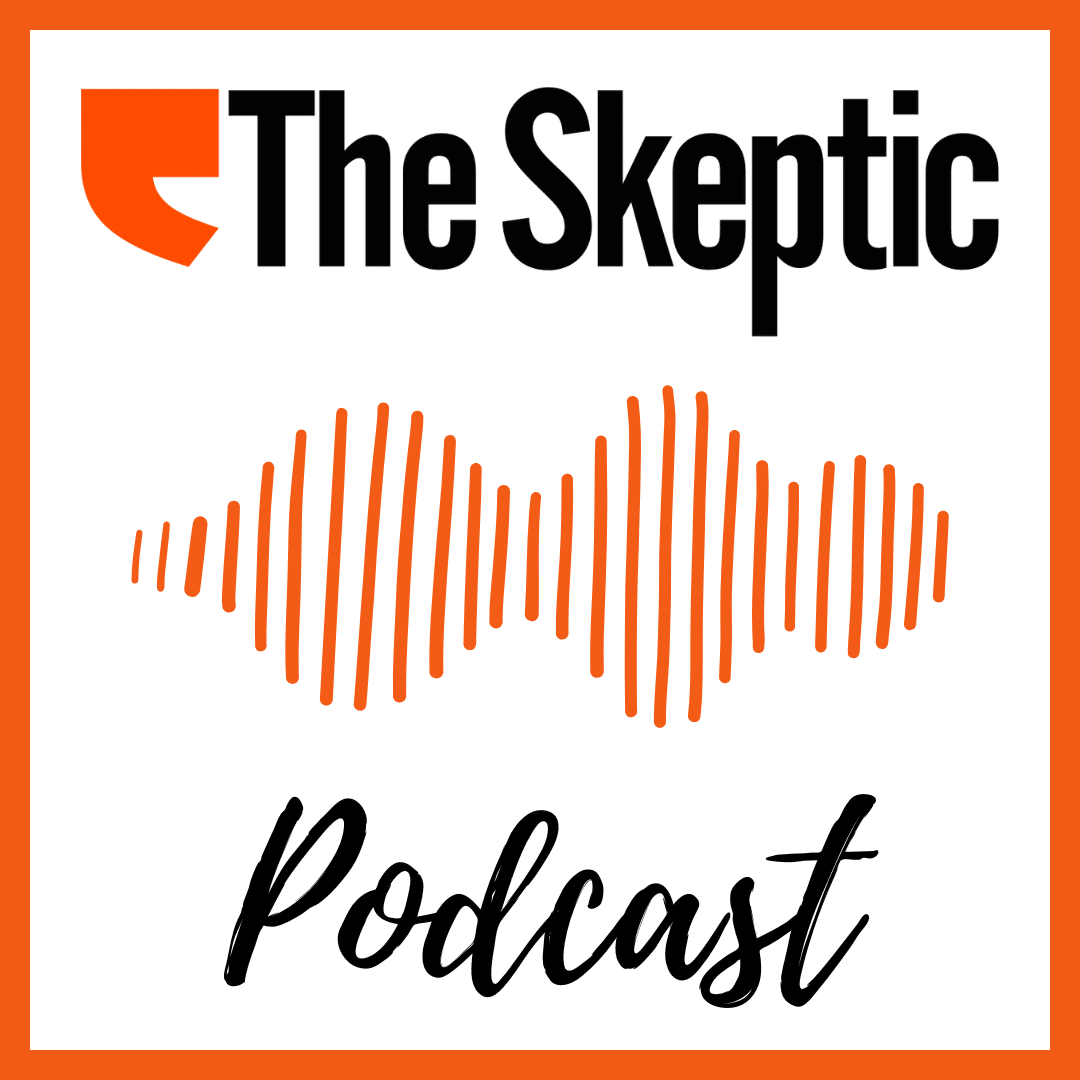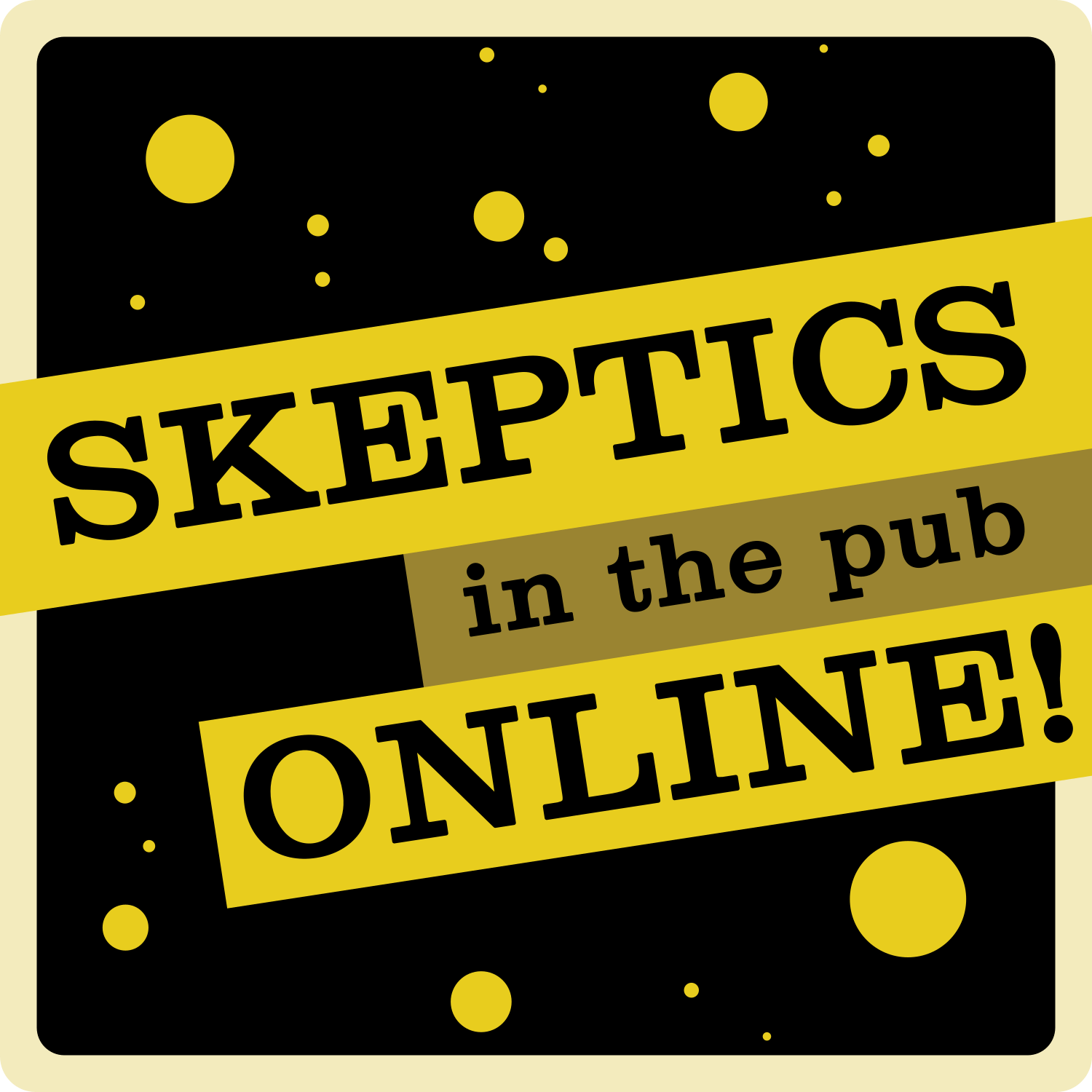The adage that astrology is the “gateway” to other pseudosciences has never been more true. A survey of conspiracy theory groups on Telegram covering Brazil and Latin America shows that adherence to anti-vaccine communities or those that promote quackery, such as chlorine dioxide (CDS) and the so-called Mineral Miracle Solution (another formulation also based on chlorine dioxide, a disinfectant and industrial bleach presented as a substance for a supposed “vaccine detox” from the COVID-19 pandemic, or even to cure the disease) has a strong connection with occult and esoteric groups.

The discovery, however, is just one of many revelations from the survey conducted by Brazilian Ergon Cugler, a researcher at the National Research Council (CNPq) at the São Paulo School of Business Administration at the Getúlio Vargas Foundation (EAESP-FGV). The work resulted in a series of seven studies focused on different aspects of conspiracy theories in Brazil and their interrelations, as well as an interactive map detailing its popularity and reach in 19 Latin American countries and territories.
Climate denialism and anti-science, for example, appear as a path to broader conspiracism, such as the New World Order, Globalism, QAnon and other theories of global domination. These, in turn, open the door to more harmful groups and religious radicalisation, with the framing of society’s conflicts as part of a true “spiritual battle” for the future of Humanity. Manipulation is also very present in apocalyptic, survivalist, occult and esoteric communities, where it serves to sell “quantum courses” and “miracle cures” such as CDS and MMS, in a cycle of misinformation dissemination and monetisation that feeds itself.
In search of data
The survey began in 2023, when Cugler was a member of the Brazilian Institute of Information in Science and Technology (Ibict), a research unit linked to the Ministry of Science, Technology and Innovation (MCTI). Cugler developed a free, open source software called TelegramScrap to automatically extract and organise data from open groups and channels on Telegram. The tool searched for certain keywords, as well as identifying “related communities” suggested by the application itself, and links and invitations to other Telegram channels and groups published in those conversations.
Cugler points out that one of the advantages of using Telegram for this type of survey is that, unlike other messaging apps like WhatsApp, when you join a community on Telegram you can read all the posts made there in the past. In some cases, his system was able to recover posts dating back to December 2015, almost a decade ago, providing a broad overview of conspiracy theories and their advance in recent years in Brazil and Latin America.
With the help of TelegramScrap – and constant work to update the interactive map – Cugler analysed more than 58 million pieces of conspiracy theory content published by around 5.3 million users across over 800 communities and channels on Telegram, which he divided into 15 categories ranging from “conspiracy theory in general” to “reptilians and creatures”, including “climate change”, “UFOs” and “flat earthers”. More than half of the content was identified as being of Brazilian origin, as were around half of the users. Together, this content has accumulated views in the order of tens of billions, hundreds of millions of shares and tens of millions of reactions.
“I’m happy to have the data, but sad to see the volume”, he laments. “This project was born looking only at Brazil as part of Ibict’s effort in partnership with other ministries and the federal government to think about strategies to combat disinformation. But over time I expanded it to include 19 countries on the continent, and another category, which is transnational conspiracy theories, which cross borders.”

The researcher emphasises, however, that the survey is not intended to be exhaustive. For example, closed communities are excluded, whose content can only be accessed with the permission of the group owners, and therefore cannot be searched by his tool. He also cannot determine with certainty the nationality of users or communities, making the classification based on indirect clues, such as the language used, mentions of the names of countries, use of their flags in the group descriptions, and addresses for orders and deliveries of the products sold.
“I can’t tell if the user is Brazilian, Colombian or Peruvian, but I know that the community is Brazilian if it’s in Portuguese, or Peruvian if it has a Peruvian flag and talks about Peru. The users in these communities tend to be from that geographic area, but there may be people from other countries who are there too”, he explains. “And it’s also interesting to see that they translate content. For example, there’s a post that says that autism is caused by parasites. We see this in Spanish, in a group from Peru, and then we find the same text translated into Portuguese, with the same commas, with the same messages.”
Business model
In light of this, Cugler is preparing the first study covering data from across the continent, focusing precisely on misinformation and conspiracy theories involving autism spectrum disorder, in partnership with the National Association for the Inclusion of Autistic People. He mapped 150 supposed causes of the problem spread in these communities – from oil and plastics to Doritos – and 150 false cures promoted and sold.
“These people have actually turned misinformation into a business model”, he says. “They set up huge groups, sometimes with 20,000 or 30,000 members, and post content there every day to create panic. They’ll post things like ‘you have 550,000 worms in your intestines’ and then say: ‘but don’t worry. There is a deworming protocol to get these worms out of your intestines’. And in the next post the will be a link for the user to buy this protocol. They create the problem and sell the solution.”
The researcher reports that this type of content is very common in anti-vaccine groups and does not only involve so-called “alternative” medicines, but also includes e-books, online courses and other digital products.

“These are communities that seem to have been set up just to sell, to monetize the anti-vaccine discourse“, he says. “In them, you often have the same image guiding the person to the problem, solution and purchase, acquisition. It is constant.”
Cugler points out that Telegram’s very design favors this business model, by recommending misinformation content and channels to those already on the network. In doing so, Telegram encourages users to take a journey through the service that takes them deeper and deeper into the Alice-hole of conspiracy theory communities there, in a practical demonstration that the best predictor of belief in a given conspiracy theory is already endorsing another conspiracy theory.
“What’s serious is that I’ve been crossing all categories of communities and there’s not one that doesn’t have a link to another, they all communicate with each other in some way”, he says. “I could solve a problem with an inappropriate medication and go to a New World Order group, which would then have a link to a group of historical revisionism and political radicalization. And this also shows the possible journey of this user, who sometimes can enter a community unwittingly because he’s outraged with the government, or has a legitimate doubt about vaccines, and ends up captured. He starts to think that there are reptilians dominating the world, and then if he takes chlorine dioxide he’ll protect himself from their nanobots, and in the end he’ll end up in a radicalization group.”
In his specific study of anti-vaccine conspiracy theories, he noted how the anti-vaccine narrative is often intertwined with larger conspiracy theories, suggesting that those who join anti-vaccine communities are quickly exposed to a larger web of misinformation and fear.
“The ideas propagated in anti-vaccine communities are not limited to health, but expand to theories of global domination, manipulation and apocalyptic crises produced by a supposed elite. This pattern highlights how anti-vaccine theories function as a gateway to a vast network of misinformation, where each narrative reinforces the others, creating a continuous cycle of radicalization”, he adds.
Cugler also describes in the study how certain communities act as opinion leaders or dissemination centres, where health misinformation is widely shared. This internal network reflects the creation of its own ecosystem, in which conspiracy narratives feed on each other, creating a vicious cycle of misinformation.

“This dynamic suggests that, once inside this network, it is difficult for followers to break away from these beliefs, as they are continually exposed to narratives that reinforce their distorted worldview, making the community a closed space of radicalization and resistance to information that is contrary to or based on scientific evidence”, he points out.
A clear sign of this detected by the study is the way in which the fraudulent study by former British doctor Andrew Wakefield linking vaccines and autism continues to come up in conversations as an argument against vaccination, despite having long since been retracted and removed from the scientific literature as being totally invalid.
“This persistence reflects the resilience of this conspiracy theory, which has been widely debunked by the scientific community but continues to be promoted by these communities as a hidden truth”, Cugler said. “The idea that vaccines cause autism serves as a focal point for different misinformation narratives, creating a common ground that connects health issues to broader issues of distrust of conventional medicine and authority.”
The intersection between health misinformation and esoteric narratives creates a highly influential and attractive network for new members. “By mixing global conspiracy theories with alternative beliefs”, Cugler explains, “these communities are able to create a disinformation network that is both complex and attractive, increasing its reach and the difficulty of dismantling these narratives”.
New level
The timescale of the data that Cugler obtained also allows us to observe how the “popularity” of conspiracy theories reached a new level with the COVID-19 pandemic, at least on Brazilian Telegram. His study reveals that anti-vaccine narratives experienced a 290% increase during the health crisis, with a growing interconnectivity with other conspiracy theories that were not limited to health themes, especially those of “global domination” such as Globalism and the New World Order.
“The number of messages, engagement, users, all of this has changed levels. We saw an increase during the pandemic, a peak and, when the pandemic was over, and a drop – but to a level much higher than before”, he reports. “And even when we look at specific terms, such as ‘chlorine dioxide’ or ‘deworming’, we see the same pattern. Brazil seems to be supporting a good part of the conspiracy theories focused on health systems, on quackery.”
A possible explanation for this is another phenomenon also observed in studies on beliefs in conspiracy theories: these ideas become part of the identity of their followers and their sense of belonging to groups, whether political-ideological or religious.
“There is an instrumentalization of faith to sell miraculous health solutions, but it is also very present, for example, in apocalypse and survivalist communities, which also monetize, but in a different way: they sell knife kits, military clothing kits. I saw a group even selling bunkers, teaching how to build a bunker on your land to be able to survive a supposed apocalypse”, says the researcher.
Regarding the link between conspiracy theories and political positioning, Cugler cites a study conducted by a former IBICT colleague as part of her doctoral thesis that indicates that the events of January 8, 2023 in Brasília, when protesters attacked the headquarters of the Three Powers in an attempt to trigger a coup d’état, could be predicted from conversations in radical groups on Telegram.
“It shows the step-by-step process of these communities, which go from conspiracy to some kind of ideological framework and then, suddenly, they are there invading Brasília, because they think this will help ‘liberate Brazil’ from the New World Order”, he says. “I only started extracting this data after the event, but imagine if there had been a structure beforehand? From the government itself, from the security agencies? There could even have been some kind of anticipation there.”



